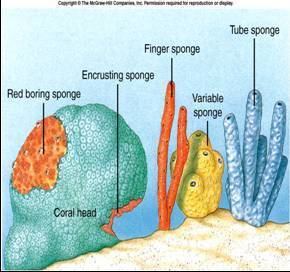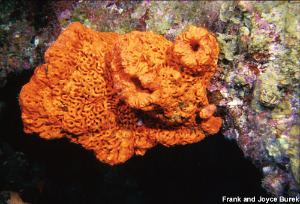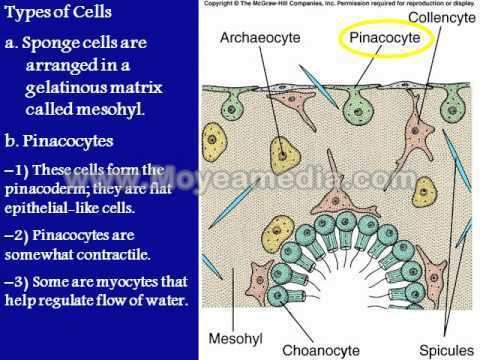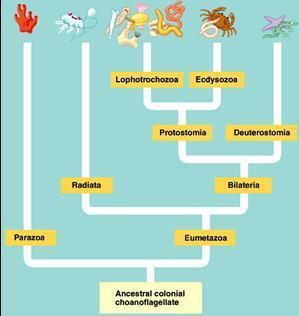Scientific name Parazoa Higher classification Animal | Rank Subkingdom | |
 | ||
Lower classifications Sponge, Placozoa | ||
The Parazoa are an ancestral subkingdom of animals, literally translated as "beside the animals".
Contents
- Topic 3 parazoa biology chapter 10 kingdom animalia fsc part 1 pre medical 11th class
- Description
- Cladistics
- References
Topic 3 parazoa biology chapter 10 kingdom animalia fsc part 1 pre medical 11th class
Description

Parazoans differ from their choanoflagellate ancestors in that they are not microscopic and have differentiated cells. However, they are an outgroup of the animal phylogenetic tree since they do not have tissues or organs. The only surviving parazoans are the sponges, which belong to the phylum Porifera, and the Trichoplax in the phylum Placozoa.

Parazoa display no body symmetry (are asymmetrical); all other animal groups display some sort of symmetry. There are currently 5000 species, 150 of which are freshwater. Larvae are planktonic and adults are sessile.
Cladistics
The Parazoa-Eumetazoa split has been estimated at 940 million years ago.

The parazoa group is now considered paraphyletic. It is not included in most modern cladistic analyses. When referenced, it is sometimes considered an equivalent to Porifera.
Some authors include Placozoa, a phylum that consists of only one species, Trichoplax adhaerens, in the division, but they are also sometimes placed in the subkingdom Agnotozoa.
